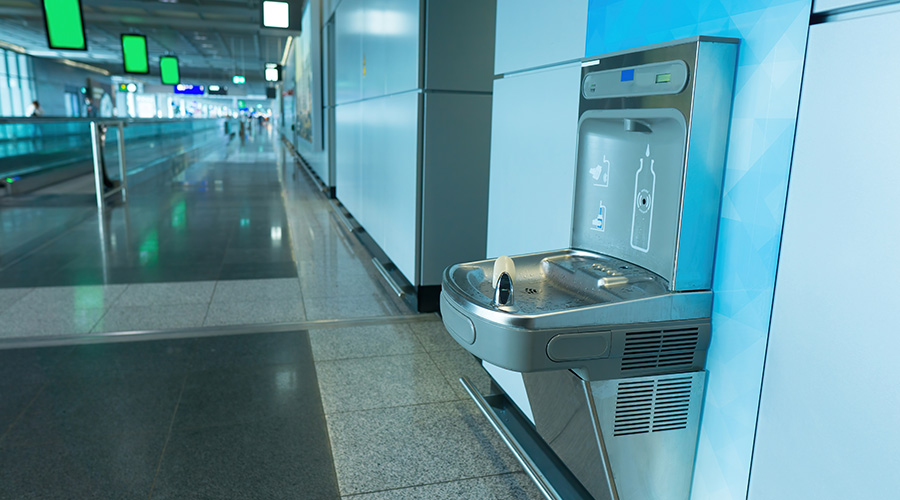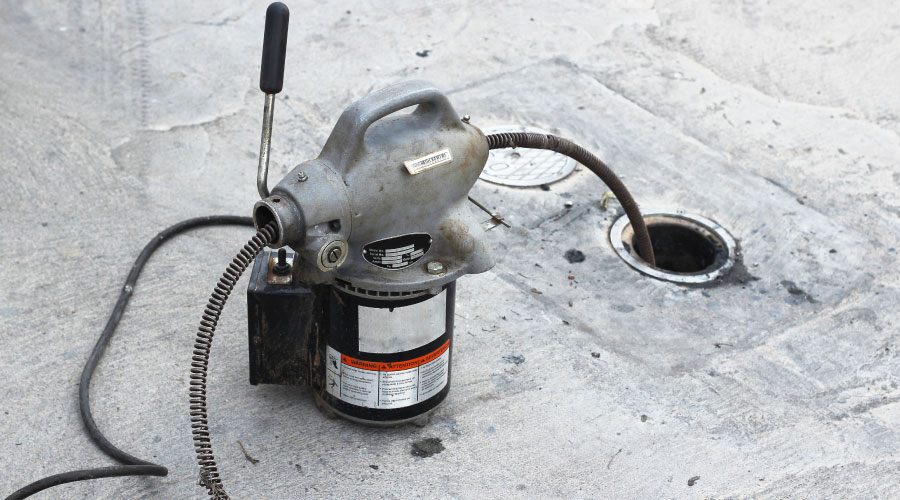Easing Restroom Access
‘Touchless’ infrared technology delivers a range of benefits to facilities, including improved access for all users
As facilities undergo changes through expansion and renovation, access remains a central focus for maintenance and engineering managers. Often, renovation projects give managers opportunities to introduce building components and technology that allow for easier access to facilities.
Nowhere is this opportunity greater than restrooms, which traditionally have presented managers with some of their toughest access challenges. Now, many institutional and commercial facilities feature restroom fixtures that incorporate infrared sensor, or touchless, technology, which offers advantages that include both easier access and lower-cost operation.
Benefits of Touchless
Besides making sinks and toilets more accessible for visitors of all ability levels, fixtures with infrared sensors allow hands-free use — an especially significant benefit in light of increasing public concern about the spread of germs and infection and about the cleanliness of public restrooms. Among the other advantages are these:
Less cleaning. Fixtures need minimal cleaning, as units are not touched.
Lower costs. Units not only turn on and off automatically, but often some dispense a measured amount of soap or paper towels. Such controlled dispensing can cut down greatly on the cost per use.
Greater water savings. Self-dispensing units afford tighter control of water use in urinals, toilets and sinks and, subsequently, sewage. More sophisticated systems are programmable. Controlling water per flush or per washing by using touchless, metered technology can significantly cut down on water use, and water and sewer bills.
Odor control. Some units can be programmed to flush when restrooms are not in use, an important consideration in controlling odors. Several units also inject a chemical into the flush, which helps provide a self-cleaning function each time the toilet or urinal is flushed and keeps the restrooms smelling fresher between cleaning cycles.
Less paper waste. Use of automated hand dryers that turn on and off automatically or automatic paper-towel dispensers minimize the amount of paper use and subsequent waste. Some studies indicate that customers prefer paper towels, and one of the problems is controlling the waste from towels, either from people grabbing a handful, jamming due to over-filling of dispensers, or dropping shreds of paper all over the floor.
Less vandalism. Since hands-free units do not have levers or touchable surfaces, there are limited external components for vandals to break, such as soap-pump handles, flush valves or towel-dispenser handles. And the auto-shut off feature, especially on faucets, minimizes the potential for flooding.
Easier repairs. Workers can replace lever-activated flush handles on hands-free toilets and urinals in a matter of minutes with retrofit repair kits. If an infrared unit malfunctions, workers also can replace it in a matter of minutes. Units can be powered by a self-contained battery pack and do not require a hard-wire source.
The downside
No product or technology is foolproof. Managers should consider these possible problems when specifying infrared technology in restrooms:
False flushes. Sometimes, restroom users or cleaners might be aggravated by false flushes. In other words, the unit flushes either while the system is in use or is being cleaned. Technicians can minimize this problem by adjusting the beam to the proper level suggested in the manufacturer’s instructions. In units with a programmable feature, the time between flushes might be adjustable. For cleaners who experience false-flush problems, a review of instructions provided by the manufacturer might eliminate the problem.
No flush. This problem might arise from a power failure from the hard-wire source, low batteries, or improper location of the beam. Should this occur, several units have a manual flush button.
Lighting interference. The location of a light source might interfere with the sensor a touchless unit. For instance, if a sensor is facing a window, periods of high or quickly changing light might trigger the sensor. The frequency band of some fluorescent lamps also can affect some sensors. Managers should address this issue with the architects and the manufacturer of the units before installation.
Refraction or reflections. If a beam or sensor is directed at a mirror or some shiny object in a restroom, the refraction or reflection might trigger the flushing mechanism. Again, a discussion with the architects and the manufacturer of units should address this problem.
Expense. In this day and age, managers obviously must be aware of the significant economic concerns involved with product specification. Even though up-front costs for touchless units might be higher, the lower-cost maintenance for such units might provide significant savings. For instance, in self-flushing units that dispense cleaning chemicals, toilets and urinals look and smell cleaner, potentially increasing the time between cleanings and, thus, decreasing labor costs.
Also, units that turn themselves on and off minimize the use of products such as paper towels or soap, limiting the costs of these products. Even though the initial investment in a touchless fixture might be higher than for a standard fixture, the savings that arise from controlling labor in cleaning restrooms, the lower amounts of damage from overflowing sinks and smaller charges for water use and sewage discharge are very likely to generate rewards in minimal time.
Though infrared sensor technology does not provide a perfect solution, it offers a range of potential benefits attractive to managers, including easier restroom access, lower long-term costs, and easier day-to-day operation and cleaning. The challenge for managers is to specify the technology properly so it addresses a facility’s short and long term.
Alan B. Bigger is director of environmental services at the University of Notre Dame. Linda B. Bigger is a freelance editor.
Related Topics:











